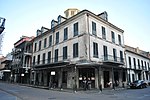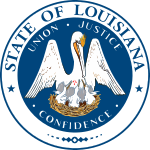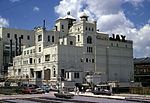New Orleans Pharmacy Museum

The New Orleans Pharmacy Museum is a museum located in the French Quarter of New Orleans that showcases the world of early pharmacies and medicine and describes development of the pharmaceutical industry and healthcare practices in the 19th century. It is the largest collection of pharmaceutical memorabilia in the United States. The building is the former residence and apothecary of America's first licensed pharmacist, Louis J. Dufilho, Jr. Difulho was licensed in pharmacy in 1816. This was in the setting when public health was lacking in New Orleans. The building was designed by J. N. B DePouilly.The building itself is an example of the French Quarter architecture, a classic two-level creole townhouse. It was constructed in 1822-1823. Dulfilho resided in the building until 1855. After Dulfilho died, Dr. Dupas purchased the building and performed unethical experiments. Subsequently, it developed a reputation for being haunted.The museum contains displays and exhibits that showcase the history of pharmacy, including glass bottles, medicines, medical instruments, voodoo potions, and herbs. There is a courtyard that grows plants including herbs similar to when Difulho used to grow for use as medicines and other products. Visitors can explore the museum on their own or choose to go on the once-a-day tour.The museum was founded in 1950.
Excerpt from the Wikipedia article New Orleans Pharmacy Museum (License: CC BY-SA 3.0, Authors, Images).New Orleans Pharmacy Museum
Chartres Street, New Orleans French Quarter
Geographical coordinates (GPS) Address Website Nearby Places Show on map
Geographical coordinates (GPS)
| Latitude | Longitude |
|---|---|
| N 29.956 ° | E -90.0649 ° |
Address
New Orleans Pharmacy Museum
Chartres Street 514
70130 New Orleans, French Quarter
Louisiana, United States
Open on Google Maps











